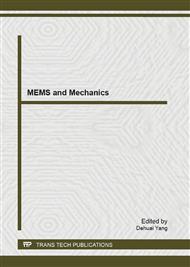p.110
p.115
p.120
p.126
p.132
p.143
p.150
p.157
p.163
Interfacial Behaviors of Vacuum Brazed Joint between Diamond Grit and Ni-13Sn-28Cr Filler Alloy
Abstract:
In this study, vacuum brazing of diamond grit was performed using an Ni-10Sn-28Cr alloy in order to examine the interfacial behaviors. In order to study the wettability between diamond grit and the brazing alloy, a graphite was used instead of diamond grit. The contact angle of Ni-10Sn-28Cr alloy and graphite decreased with increasing holding time and temperature. The shear strength between graphite and Ni-10Sn-28Cr filler alloy showed the best value of 29.8 MPa at 1100°C brazing temperature. It was shown that the shear strength was decreased significantly due to the increase of the thickness of brittle reaction layer and interface residual stress, as the brazing temperature increased up to 1200°C. In regards to the thermal stability evaluation of diamond grits, the graphitization of diamond grit was observed to occur at 1300°C brazing temperature after 60 minutes. Beyond 1100°C brazing temperature, diamond grit exhibited ideal setting in the brazing filler alloy, whereas process diamond grit was observed to be fully embedded in the brazing alloy and damaged at 1200°C temperature. The results of interface analysis of the diamond grit joints brazed by the brazing alloy showed that the chromium carbides played an important role in high strength bonding and as the brazing temperature increased, existing angular chromium carbide transformed into acicular chromium carbide.
Info:
Periodical:
Pages:
132-142
Citation:
Online since:
June 2013
Authors:
Price:
Сopyright:
© 2013 Trans Tech Publications Ltd. All Rights Reserved
Share:
Citation:


